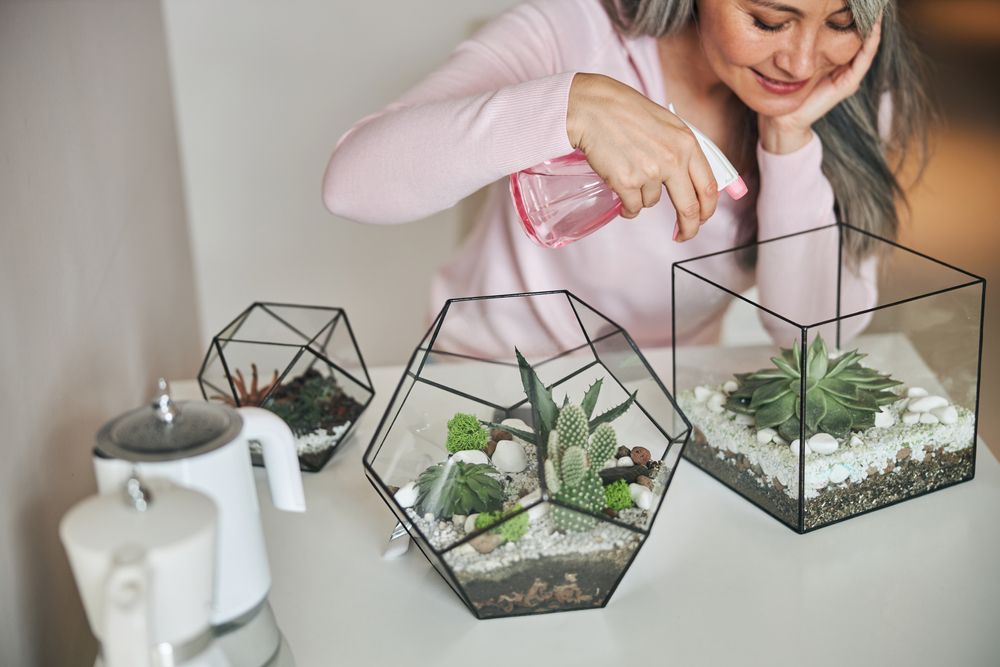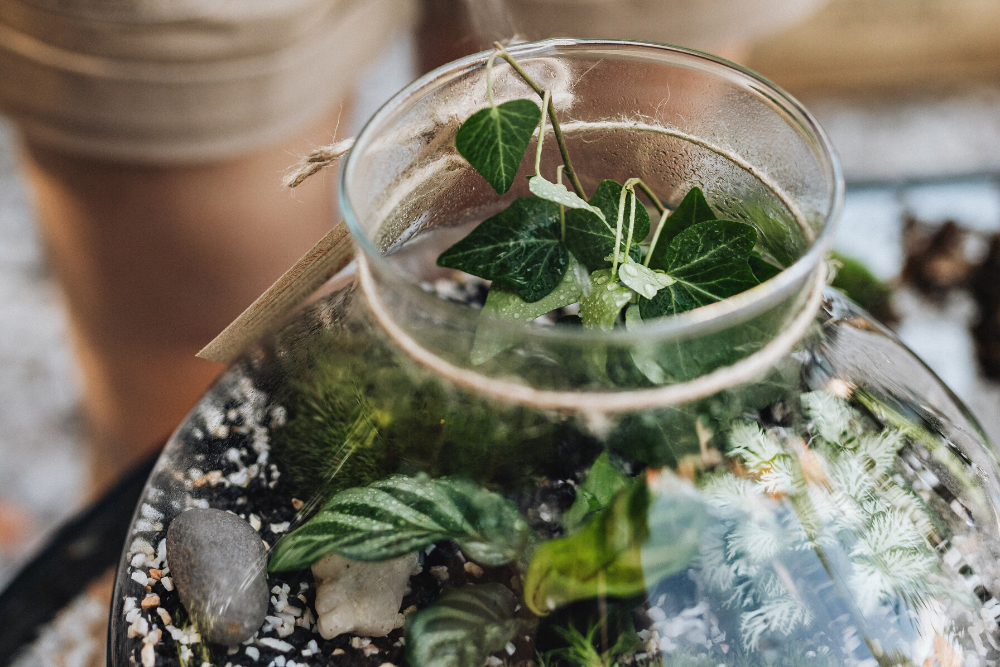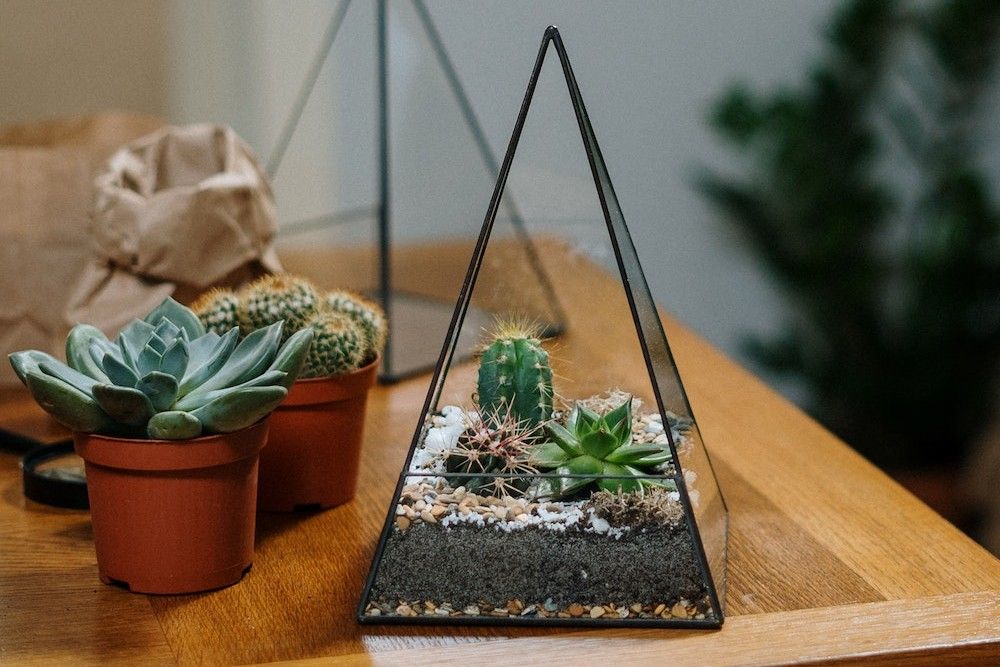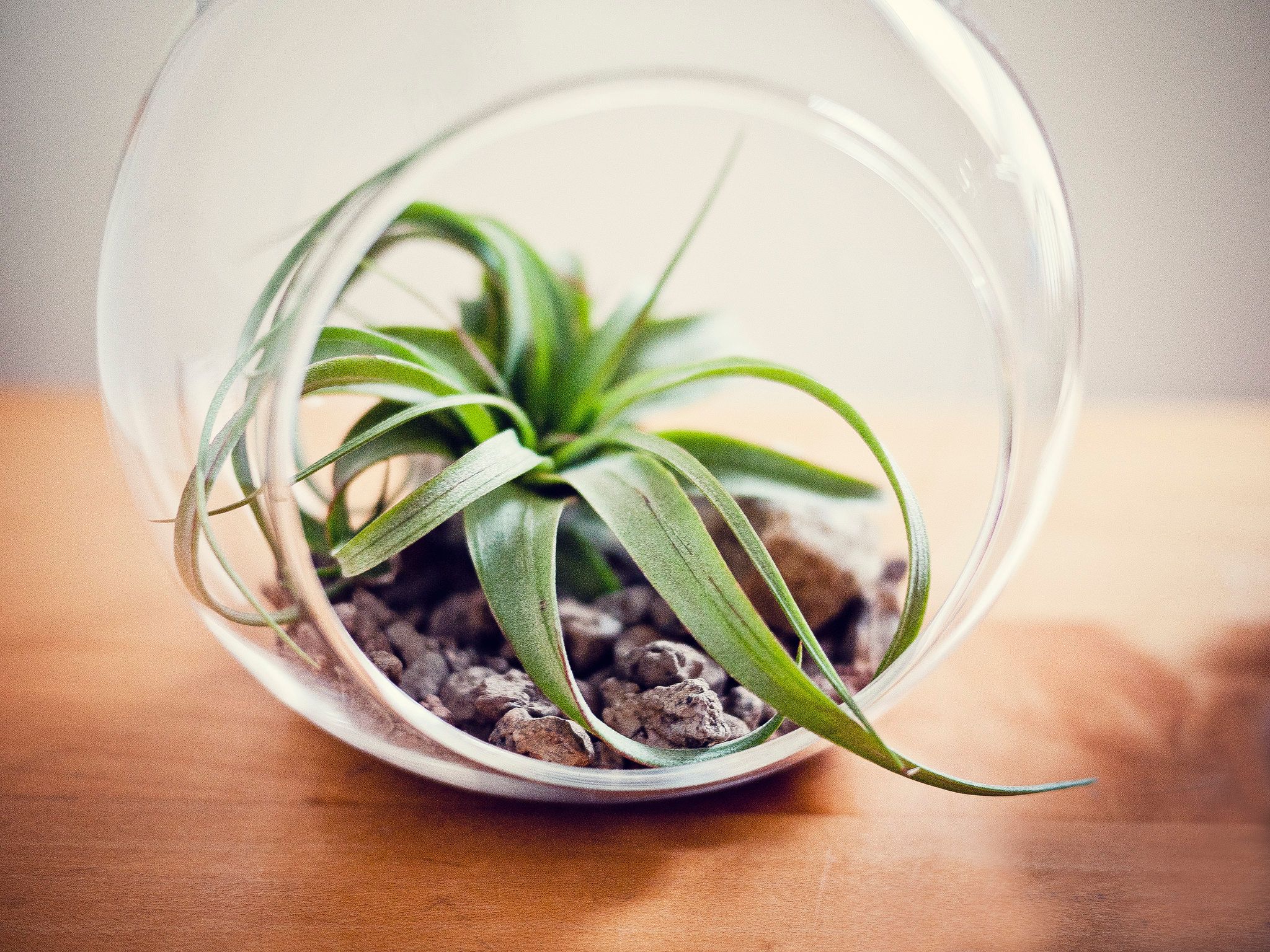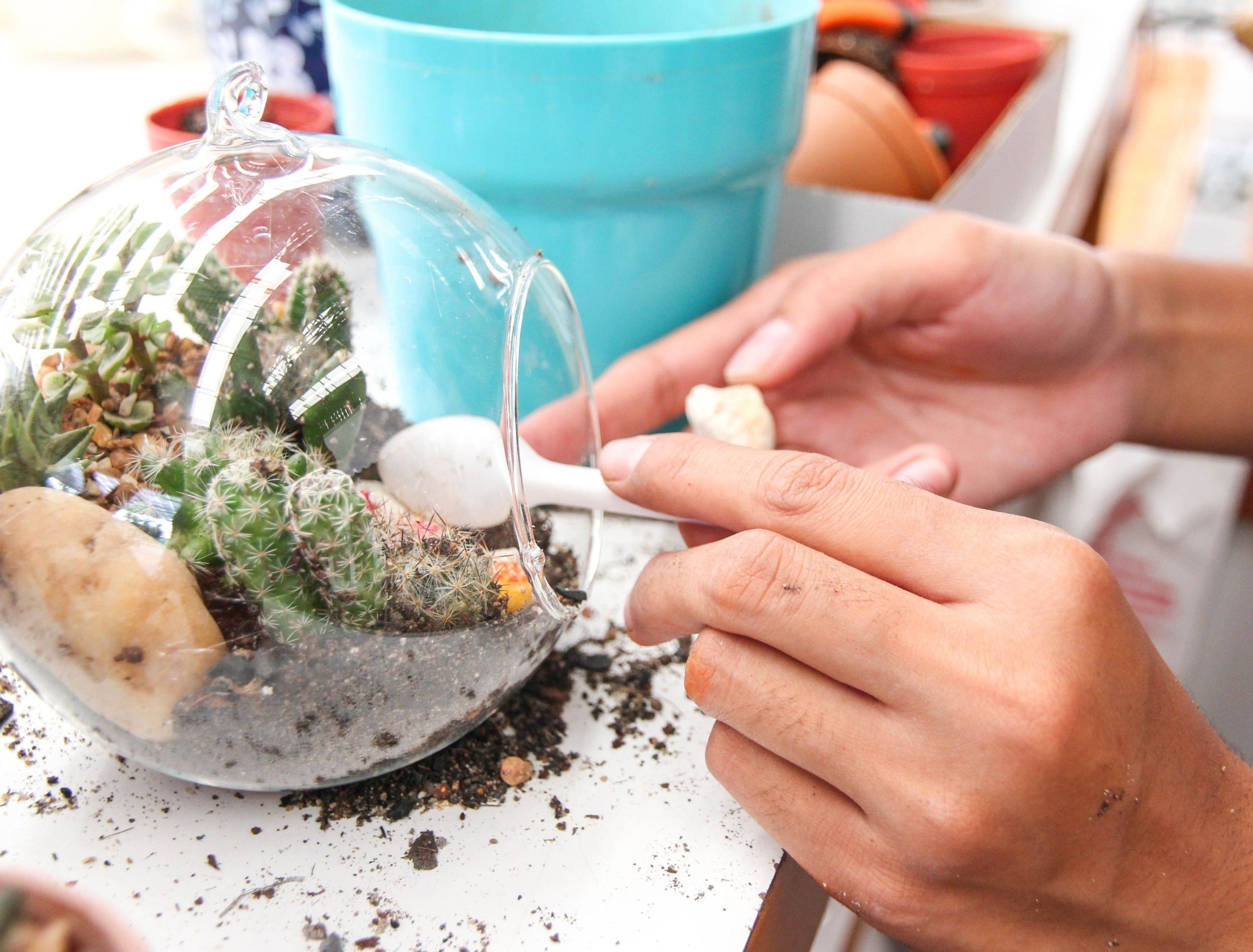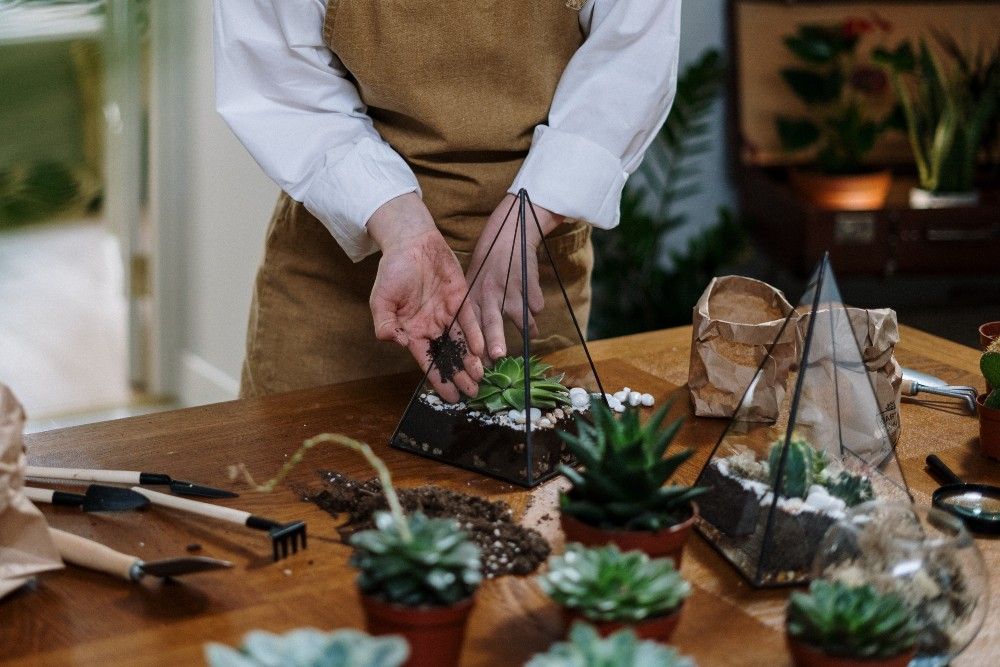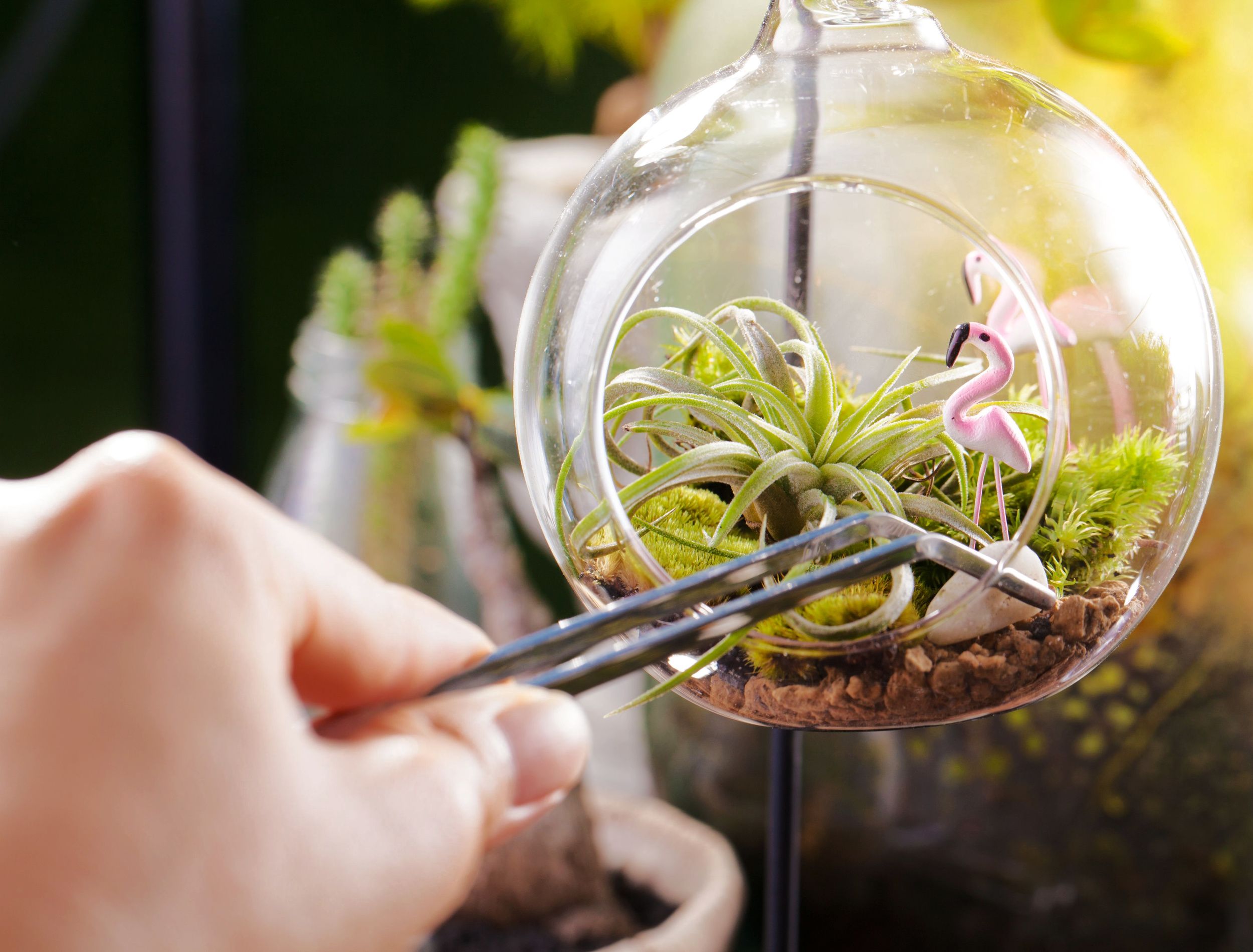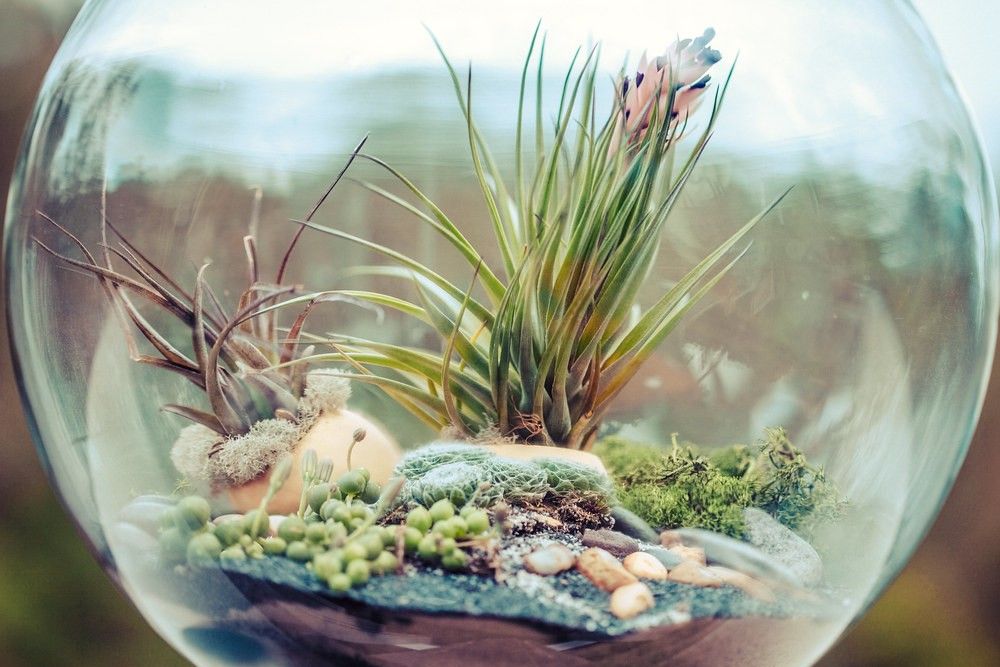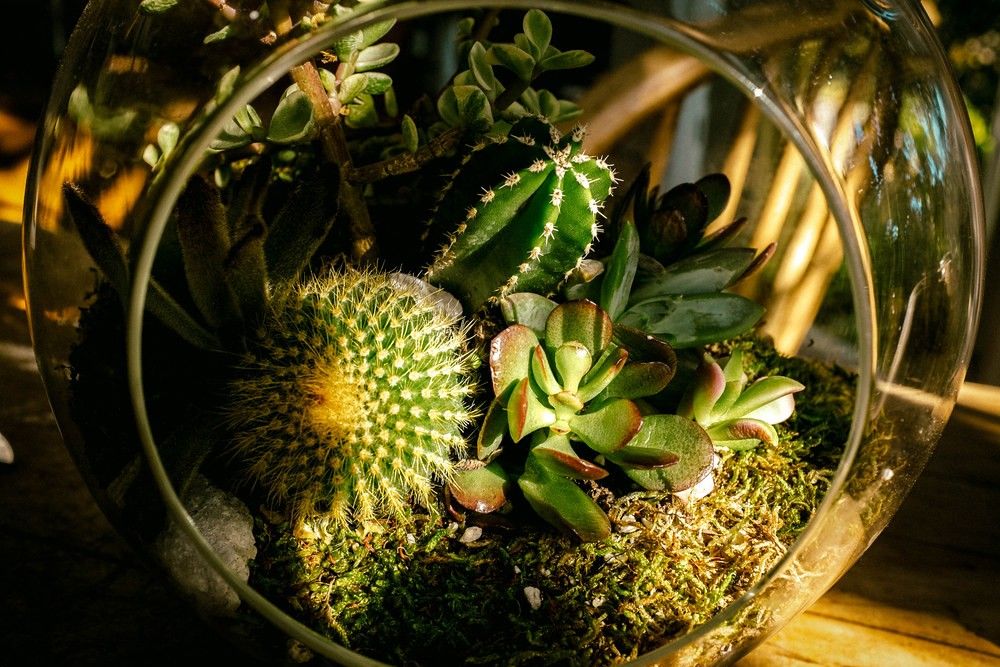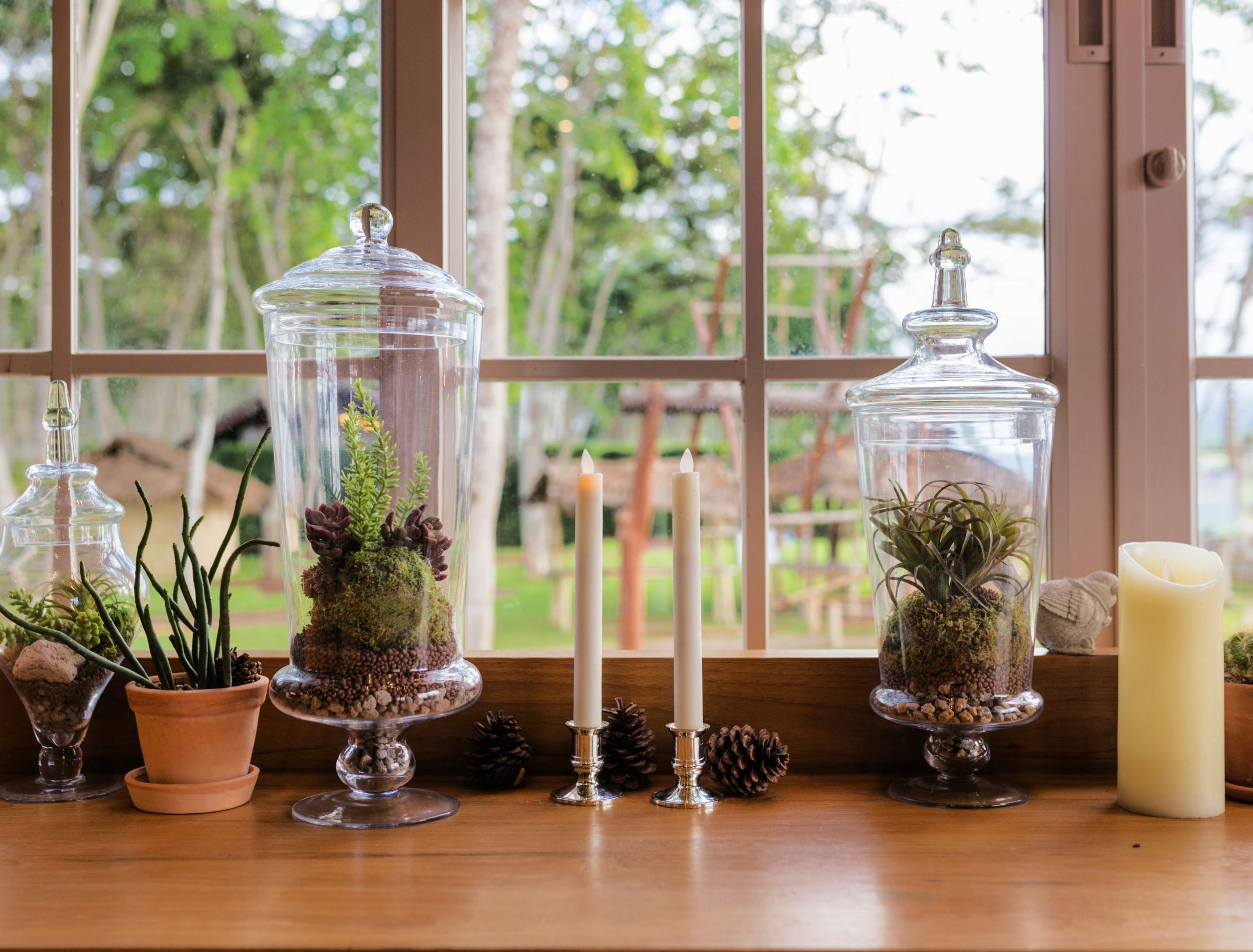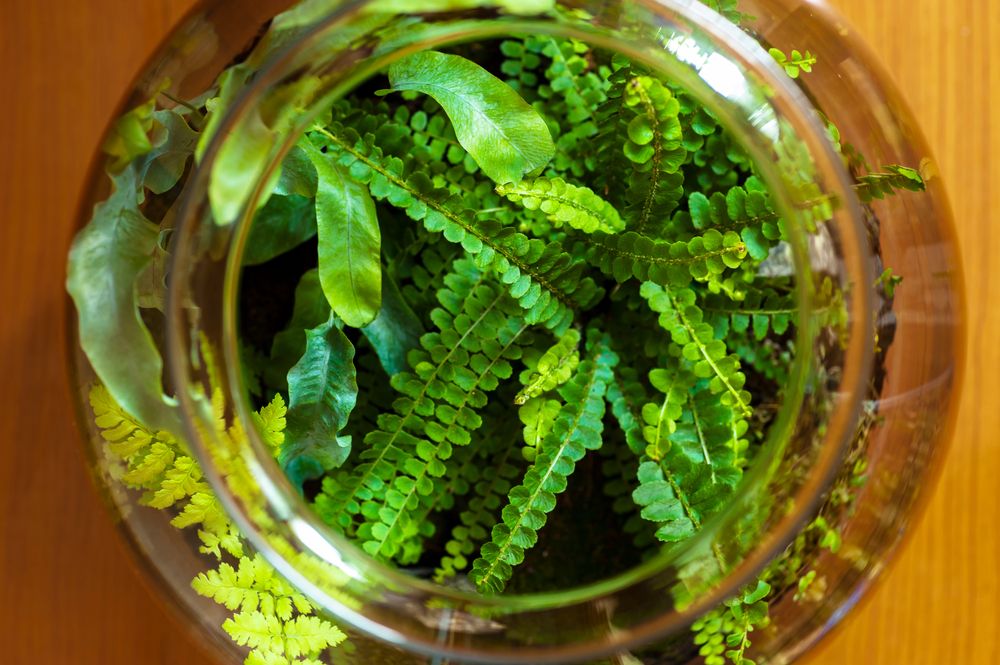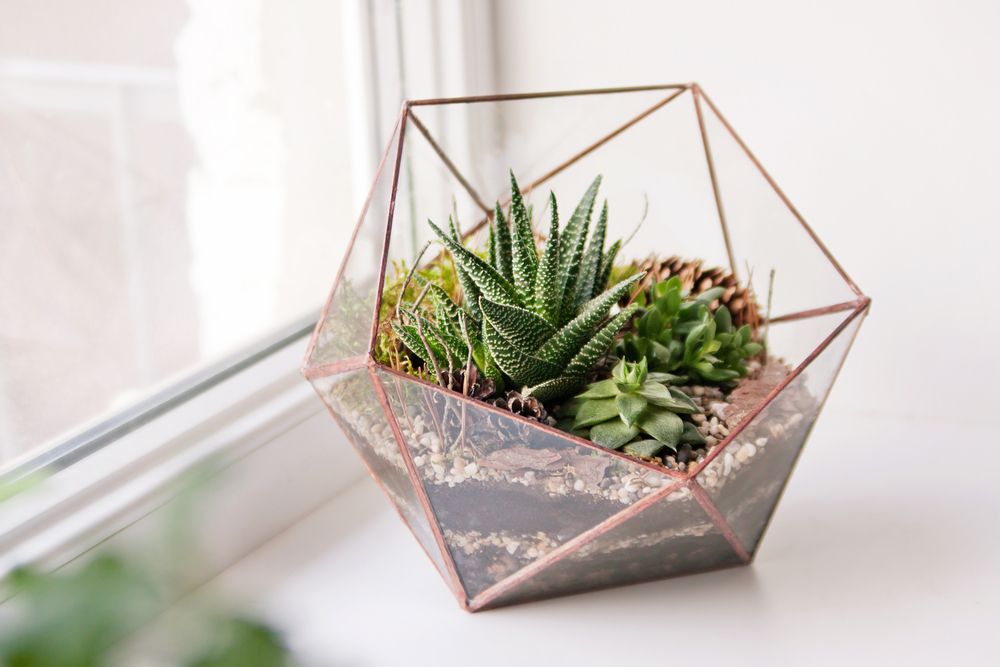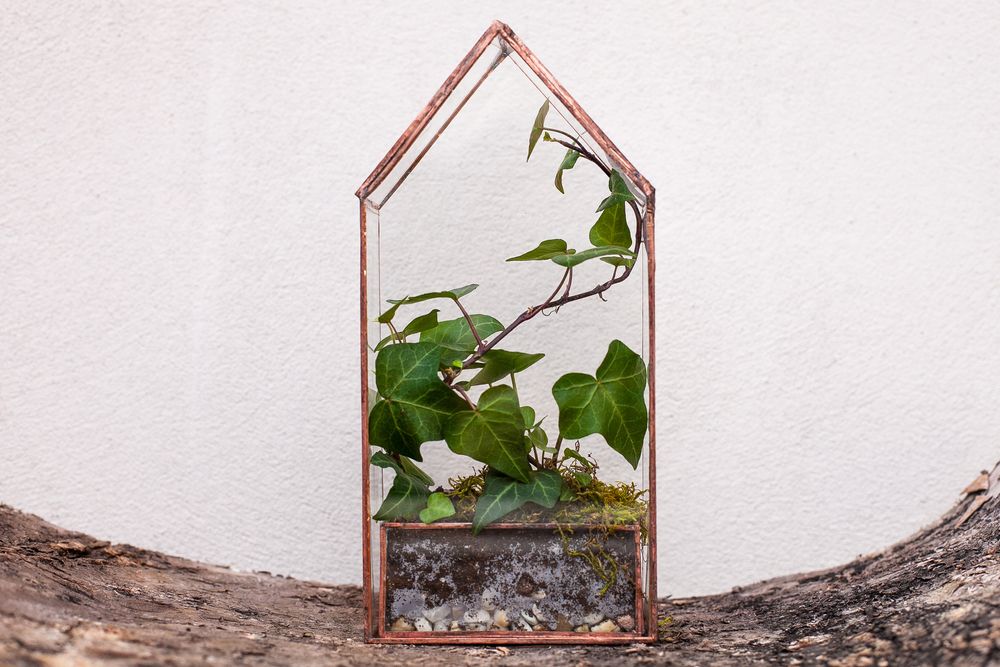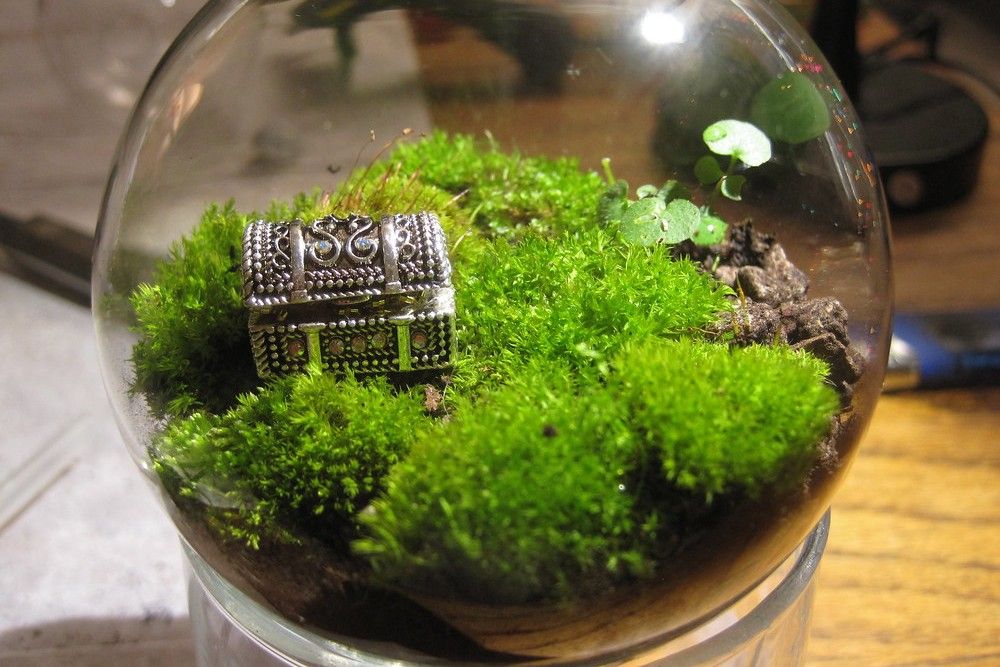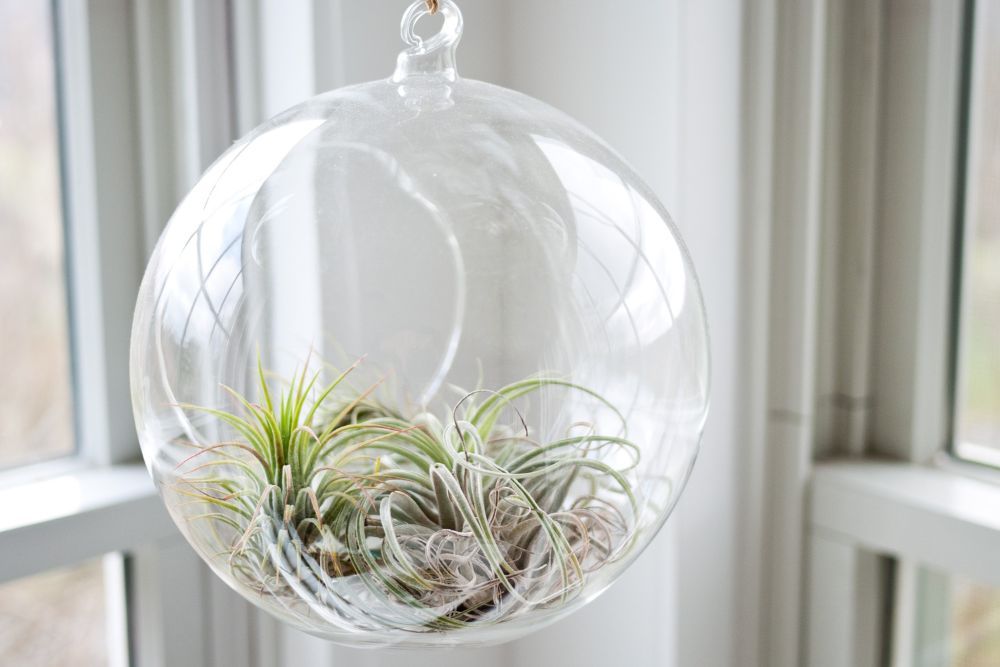If you’re looking for a fun, easy-to-maintain addition to your home décor, consider creating and caring for a terrarium. Terrariums offer a unique opportunity to bring the outdoors into your living space with little effort on your part. But it is vital that you know how often to water them in order to keep up with their maintenance needs and ensure they stay healthy and vibrant!
Here’s why watering frequency matters and some helpful tips so that your terrarium thrives. So, grab yourself a glass of lemonade, sit back, relax, and let’s learn about the art of taking care of a terrarium!
How Often You Should Water Your Terrarium
Image credit: Karolina Grabowska via Pexels
The key to keeping your terrarium healthy is knowing how often to water it. Open terrariums typically require weekly watering with a spray bottle or tablespoon when the soil appears dry. Be careful not to overwater as that could harm your plants! For closed terrariums, you may only have to water every four to six months.
Keep an eye out for condensation on the plants and dry soil as an indicator of when it might need some extra H2O. If condensation forms on the inside of the container instead of the plants, then there is likely too much moisture in the air, and you should take off the cover for 15 minutes to an hour each day.
How to Care for Your Terrarium
With just a few simple steps and the right plants, you can create an enchanting miniature garden that will bring peace and joy for years to come. Here is how to care for your terrarium and keep it looking its best!
Get the Right Container
Image credits: cottonbro studio via Pexels
You can go wild with creativity here and use almost any clear glass jar or container. Opt for something that has a wide enough opening so that you can add your chosen plants. A few popular options include mason jars, aquariums, goldfish bowls, and pickle jars -- all of which provide an attractive look to your terrarium.
Closed containers are great for maintaining humidity, so these are ideal if you’re going for tropical plants or others that need moist conditions. On the other hand, choose open containers if you’re planning to grow cacti and other succulents as they don’t require as much humidity.
Pick Your Plants
Image credits: Ciera Holzenthal via flickr
When it comes to choosing the right terrarium plants, there are so many options available. From small succulents and cacti to lush tropical foliage. To get started, look at the size and shape of your container, as this will determine what types of plants you can get. Visit your local garden center for expert advice on which plants would work best for your terrarium setup.
Add Drainage
Image credits: Akkalak Aiempradit via Shutterstock
Adding a drainage layer to your terrarium is an essential step for creating a healthy environment for your plants.
Start by pouring a 2-inch layer of sea glass, coarse gravel, or beach stones into the bottom of your container. This will allow excess water to flow away from the roots of your plants and prevent them from rotting.
Next, add a 1/4 to 1/2 layer of activated charcoal on top of the gravel. The charcoal helps filter out any toxins that could harm the plants while also preventing fungi and bacteria from growing when your terrarium gets wet.
Add Your Potting Medium
Image credits: cottonbro studio via Pexels
When it comes to creating the perfect environment for terrarium plants, potting medium plays an important role. A quality mixture of soil and gravel can help keep your plants healthy and vibrant.
Start by layering some sheet moss over the charcoal and stones at the bottom of your container. This will prevent any potting soil from mixing in with the rest of the base layer materials. Then, cover that with a 1-inch layer of sterile potting mix. Leave enough room at the top so that there’s plenty of room for your plants to grow!
Prep Your Plants
Image credits: Piti Tan via Shutterstock
Remove the plants from their nursery pots and gently untangled the roots. Do this before planting so the roots can spread out and take hold when placed in the terrarium.
Next, consider the design of your terrarium. Set larger plants near the center with small plants around it to create a visually pleasing landscape. This will also ensure each plant has enough room to grow and flourish.
Plant!
Image credits: avrene via Openverse
Dig a hole in the potting mix for each plant. Then gently place the plants in their holes and lightly smooth out the surrounding soil. There should be about a 1/2-inch layer of soil on top to keep the plants nestled in their new home.
Once planted, you can add more decorative elements like rocks, pebbles, mosses, and figurines to complete the look of your terrarium.
Lighting
Image credits: avrene via Openverse
Light is a vital ingredient for success in your terrarium garden. Depending on the plants you choose, they may need bright but indirect sunlight or artificial light to thrive. If your space doesn’t have access to bright indirect sunlight, you can simulate this with artificial light. Try using a 100-watt bulb or fluorescent tube over the garden for 16 to 18 hours each day. Set the timer so that the lights don’t stay on throughout the night!
Upkeep
Image credits: DIGITAL_RED via Shutterstock
After tending to the initial setup of your terrarium, there are steps you can follow to keep your plants healthy and vibrant.
Remove dead or damaged leaves as soon as you see them. Also, don’t fertilize your terrarium plants; the closed environment can lead to an excessive build-up of salts in the soil. Simply give them access to light and water, ideally through a misting bottle.
Occasionally clean the glass both inside and out. Wipe down with a damp lint-free cloth. Do not use any harsh chemical products on your terrarium.
Plants That Work Well in Terrariums
Some plants do especially well in terrarium environments because of their unique characteristics. Here are some of the best terrarium plants for any green-thumbed enthusiast:
Ferns
Image credits: qnula via Shutterstock
Ferns are a classic choice for terrariums, as they thrive under humid conditions and require little maintenance. When it comes to watering your fern, find the right balance. Too much water can cause rhizomes to rot. On the other hand, not enough water may mean that your fern doesn't get all its required nutrients.
To make sure you’re providing just the right amount of moisture for your fern, consider spraying your terrarium once a week -- but keep an eye out for condensation on the glass as this could be an indication that there's too much moisture inside.
Look for fern varieties like asparagus fern, maidenhair fern, or artillery fern for tropical, lush foliage that will add depth and texture to your terrarium design.
Succulents
Image credits: Dzina Belskaya via Shutterstock
Succulents are hardy plants that can tolerate a range of climates. From desert-dwelling varieties to those that require a bit more moisture, there are many types of succulents that will fit into your terrarium design.
For optimal results, depending on the temperature, it's best to water your succulents once per week as they are drought tolerance, storing water in their fleshy stems and leaves. To avoid overwatering, use syringes to carefully put water directly in the soil. If the weather is particularly hot and dry, increase watering frequency to twice a week for maximum results. As always, check your terrarium prior to watering. If the soil is damp or you see condensation on the glass, hold off for a few more days.
Look for jade plants, ghost plants, and living stones for bright pops of color and easy maintenance.
Ivy
Image credits: Alexandra Bordeianu via Shutterstock
Ivy makes an ideal choice for larger terrariums where you want to fill in space or create a lush backdrop. Variegated ivy will add interesting texture and pattern to your terrarium design as well.
When it comes to keeping your ivy thriving in a terrarium, you'll want to ensure that the soil remains slightly moist but never soggy. Check the sides and top of your terrarium -- If there is no moisture along the sides of the glass, then you need to add some more.
On the other hand, if the glass is always wet, then there’s too much water. Remove the top of your terrarium to let some of the excess evaporate.
Some varieties best suited for terrariums are grape, Swedish, and English Ivy.
Moss
Image credits: elias_daniel via Openverse
Mosses thrive in high-humidity environments like terrariums and don’t require much attention to stay healthy.
When it comes to watering moss, it’s best to keep a regular schedule to avoid overwatering. Mist the moss every week or two, or whenever the moss feels dry when you touch it.
Look for spike moss or club moss for a rich and vibrant look.
Air Plants
Image credits: Jeff Sheldon via Unsplash
Air plants (Tillandsia) are a great option for terrariums and are a popular household plant due to their independence. These plants do not need to be planted in soil, instead they root to things such as tree bark. Because of this, water is absorbed through the foliage rather than the roots. Mist them once a week to keep them happy.
You also have the option to remove the air plant from it's home and soak it for 10 to 20 minutes. Once dry, you can place them back in the terrarium.
Create Your Own!
Maintaining a healthy terrarium requires relatively little work on your part, but it is important to water your plants regularly and know how often to do so. By following the tips in this article, you can ensure that your terrarium stays healthy and vibrant for years to come!
Do you have a terrarium or are you thinking about starting one? Leave a comment below and share it with your family and friends!

